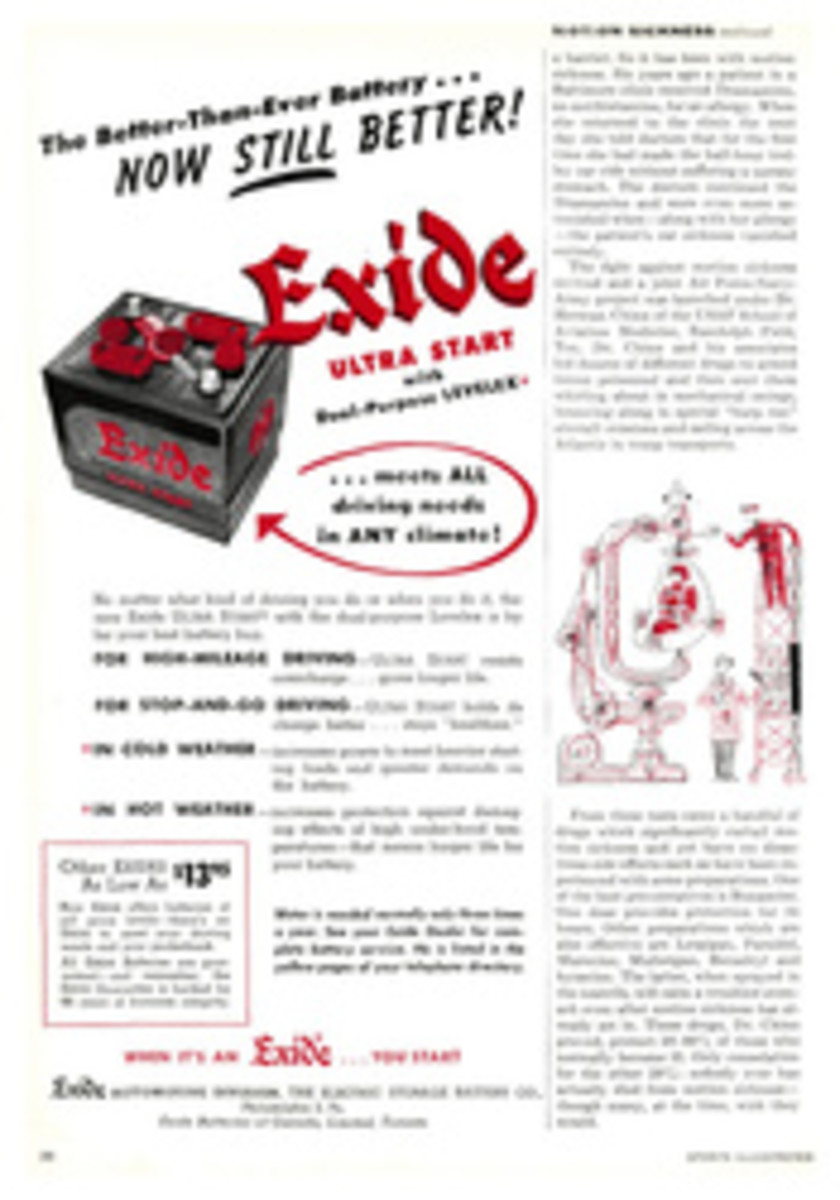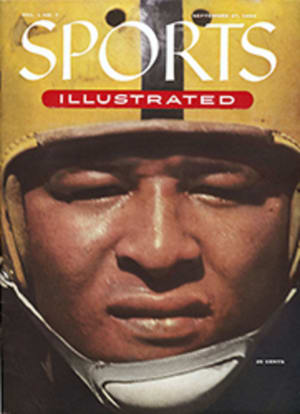
NEW YORK PROUDLY PRESENTS:
THOSE GIANTS—In the spring, when New York's Giants were ending a series of 21 exhibition games with the Cleveland Indians, someone asked Al Lopez to sum up the Giants' pennant chances.
"They have a good eight men," the Cleveland manager said quickly. "A real good eight men."
"And the pitching?" Lopez was pressed.
"They have a real good eight men," he repeated.
A few days ago when the Giants were about to clinch the National League pennant, Gary Schumacher, an erudite man who works in the Giant front office but speaks with a Brooklyn accent, was asked to sum up the reasons why his team had won.
"The pitchin'," he said. "It was consistently brilliant. In 56 games the other clubs got two runs or fewer. That's the basic strength."
Last spring Lopez' opinion was sound. In fact, it was shared by every baseball man who watched the Giants and Manager Leo Durocher launch what sportswriters liked to call "the year of atonement" for the dreary fifth-place finish in 1953. This fall, Schumacher's statement is irrefutable. Pitching is the Giants' basic strength; but unpredictability is the Giants' basic characteristic.
First, of course, there is Willie Mays, the wondrous boy of 23 who plays centerfield as no Giant ever played it before him. Willie is alive and bubbling and in love with baseball. He catches "doubles" in stride; strains a little catching "triples." While Willie is not yet ready for baseball's Hall of Fame, he is surely the best defensive centerfielder in the game.
For half a season Willie hit home runs at one of the fastest clips in history. Then he stopped hitting homers, but his batting average climbed to over .340. No one, least of all Willie, knows how or where Willie Mays is going to hit.
But from the start everyone, most of all the Giant pitchers, knew that Mays would catch everything catchable. "It's gonna be easy with him out there," said Marv Grissom, a 36-year-old pitcher who possessed no great distinction when he first saw Mays last spring. "All you got to do is make 'em hit the ball in the park. Willie will catch it anywhere." Then Grissom, helped equally by a newly developed screwball and by suddenly strong defense, became an outstanding relief pitcher.
Where Mays, returned to the Giants last March after two years in the Army, has been the sensation, Johnny Antonelli, a tall, serious young left-handed pitcher, has been the quiet hero. The Giants acquired Antonelli from the Milwaukee Braves in a winter trade for Outfielder Bobby Thomson—and got in him a pitcher of promise but no proved merit.
At 17 Antonelli had been given a bonus of $65,000 to sign with the Braves but until this year his best effort was a 12-and-12 season in 1953. Frank Shellenback, a fatherly man who serves as pitching coach for the Giants, took Antonelli in hand, shortened his pitching stride, improved his control and helped make him a 20-game winner.
Antonelli is a good bet to start the first game of the World Series. Sal Maglie, a nerveless veteran right-hander, is the best choice to start the second. Last year Maglie seemed through, undone by a back ailment. Last winter he went to a chiropractor and showed up in the spring with a rubber lift, an eighth of an inch thick, which he placed in the heel of one shoe.
"My pelvis is tilted," Maglie explained. "The lift evens up my legs." There was some scoffing which ended when Maglie pitched strongly all spring, then went on to regain most of his old effectiveness.
Behind the tutored Antonelli and the tilted Maglie is Ruben Gomez, a perfectly healthy Puerto Rican right-hander, who was earlier rated the Giants' best pitcher but has dropped back to No. 3 because of Antonelli's development and Maglie's recovery. Hoyt Wilhelm, a knuckle-baller, is the only other Giant pitcher who looks like a Series factor. He shares the relief pitching with Grissom. Beyond these five pitchers there is little mound strength.
Defensively the infield is steady. Whitey Lockman at first, Captain Al Dark at shortstop, and Hank Thompson at third are all competent fielders. Davey Williams at second is outstanding. Lockman, Dark and Thompson are tough hitters; Williams has been in a season-long batting slump.
For years Wes Westrum, the top catcher, has been in a batting slump—now regarded as permanent—but his fine receiving and excellent handling of pitchers makes him a good choice to do most of the work in the Series.
Don Mueller, the rightfielder, hits well over .300 and fields adequately without fuss. Monte Irvin, the leftfielder who hit .458 in the 1951 World Series, has suffered through a bad season at bat. Jim (Dusty) Rhodes, a weak-fielding free-swinger, probably will share left with Irvin.
THE ASSET CLEVELAND HASN'T GOT
It may not mean much, but the Giants won 13 of their 21 spring games with Cleveland. What means more is that the two clubs have been making spring tours for years and know each other as well as any World Series rivals ever have.
The Giants know they will be underdogs. They are not one of the all-time great clubs, although Durocher says they are better than the '51 team that came from nowhere to overtake the Brooklyn Dodgers in a play-off. Their strength is pitching and clutch dramatics.
A year ago Durocher gambled constantly and finished nowhere. This year he has managed conservatively and let the players themselves produce the excitement. A large block of experts conceded the 1954 National League pennant to the Brooklyn Dodgers last January, so for the Giants this has been a stimulating year. Let the experts pick Cleveland—and Cleveland pitching—if they want to. The true Giant fan knows his team has got some pitching too. Moreover, he points hopefully to an asset Cleveland hasn't got.
"Mays," the Giant fan says. "Willie Mays."
[originallink:10456201:40742]

